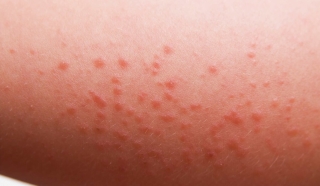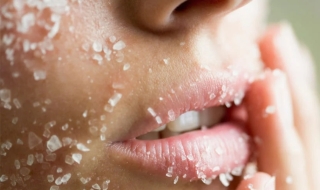It can be unnerving to find rashes on your skin, especially in areas open to the inspecting eyes of the public. More confusing and frightening is it when you cannot tell whether it’s a razor bump or herpes. To worsen things, Google will list dreadful diseases with symptoms that match yours if you try to check things out online, leaving you to wonder if your health is gradually deteriorating or if it’s just your skin reacting to your last grooming exercise.
The possible culprit behind those rashes – razor bumps and herpes – happen to have similar symptoms. Therefore, to diagnose any of them, you need a careful examination of your symptoms and sometimes a lab test so you won’t end up panicking over a skin bump that will go away on its own or ignoring a health condition that needs urgent medical attention.
This article will carefully explore the causes, symptoms, treatment, prevention, and differences between razor bumps and herpes to help you identify the type of skin abnormality you are experiencing and how to handle it appropriately.
What are Razor Bumps?
 Razor bumps, which go by the scientific name Pseudofolliculitis barbae, are little bumps that occur on the skin after hair removal exercises like shaving. The bumps are caused by ingrown hair (curly hair that is partially cut off and curls into the skin). They cause skin irritation that leads to bumps because instead of growing out, the hair grows inside your skin.
Razor bumps, which go by the scientific name Pseudofolliculitis barbae, are little bumps that occur on the skin after hair removal exercises like shaving. The bumps are caused by ingrown hair (curly hair that is partially cut off and curls into the skin). They cause skin irritation that leads to bumps because instead of growing out, the hair grows inside your skin.
You are likely going to find razor bumps on the parts of your body that you shave, such as your face, legs, arms, underarms, groins, and others. Men are more prone to razor bumps as most have to shave constantly to maintain a groomed look.
Symptoms of Razor Bumps
- Small, solid, and rounded bumps (papuples)
- Pustules
- Itching
- Darkening or discoloration of the affected part
- Pain and tenderness.
Recommended reading:
A New Era of Home Beauty: Professional Laser Hair Removal Device Enters Our Life
Treatment of Razor Bumps
Razor bumps can be successfully treated at home with any of the following:
1. Exfoliation
 Exfoliating to remove the layer of dead skin cells that may be clogging your pores should be the first step to take. Although you may not feel comfortable exfoliating an area that looks inflamed already, it helps. You don’t have to be so hard on your skin; just exfoliate gently.
Exfoliating to remove the layer of dead skin cells that may be clogging your pores should be the first step to take. Although you may not feel comfortable exfoliating an area that looks inflamed already, it helps. You don’t have to be so hard on your skin; just exfoliate gently.
You can use a store-bought exfoliator that you have tested before and seen that it’s good for your skin or make your exfoliator at home using olive oil and sugar. Gently rub the exfoliator on the affected area for at least five minutes and use warm water to rinse it.
2. Aloe Vera
 Aloe Vera gel has lots of health benefits for the skin. It is anti-inflammatory, soothing, anti-bacterial, and moisturizing. Applying it over areas affected by razor bumps will help put an end to the inflammation and itching.
Aloe Vera gel has lots of health benefits for the skin. It is anti-inflammatory, soothing, anti-bacterial, and moisturizing. Applying it over areas affected by razor bumps will help put an end to the inflammation and itching.
To DIY your way around this home remedy, get aloe vera gel from the freshly cut plant. Apply it on the affected part and rinse off after 30 minutes. For Maximum results, repeat this process at least twice daily.
3. Tea Tree Oil
 With the anti-bacterial and anti-inflammatory properties of tea tree oil, you can use it to successfully treat razor bumps at home. It will open the pores on your skin, treat ingrown hair, and reduce redness and inflammation.
With the anti-bacterial and anti-inflammatory properties of tea tree oil, you can use it to successfully treat razor bumps at home. It will open the pores on your skin, treat ingrown hair, and reduce redness and inflammation.
To prepare the tea tree oil for this purpose, get a bowl of warm water and add 15 drops of the tea oil inside it. Soak a soft towel inside the bowl and use it on the affected skin. Leave the soft towel on it for at least 30 minutes before removing it, and repeat the process at least twice daily till the razor bumps disappear.
Other home remedies that you can try include witch hazel and coconut oil.
Medical treatments: medical treatments available for razor bumps include steroid creams, antibacterial lotions, and warm compressors. In severe cases, an extraction of the ingrown hair may be necessary.
How to Prevent Razor Bumps
- Do not shave too often or too fast
- Shave only when the area is wet
- Change your razors as often as necessary
- Use only shaving creams that are compatible with your skin
- Move your shaving stick in alignment with the direction of hair growth.
- Use an intense pulsed light (IPL) hair removal gadget instead of a razor for hair removal
Herpes
 Herpes is an STI that is caused by the Herpes Simplex Virus (HSV). It is characterized by bumps, blisters, or sores on the genitals, rectal region, or around the mouth. There are two types of Herpes: HSV-1 or Herpes Simplex Virus type 1 and HSV-2 or Herpes Simplex Virus type 2.
Herpes is an STI that is caused by the Herpes Simplex Virus (HSV). It is characterized by bumps, blisters, or sores on the genitals, rectal region, or around the mouth. There are two types of Herpes: HSV-1 or Herpes Simplex Virus type 1 and HSV-2 or Herpes Simplex Virus type 2.
The HSV-1 is the type that affects the mouth primarily. However, it can also be found in the genitals, especially the genitals of people who engage in oral sex. The infection is more common in the buccal regions. The HSV-2 is the type that affects the genitals and can be transferred from person to person through sexual intercourse.
Like so many viral infections, herpes has no long-lasting treatment, but you can manage it. The period you are plagued with the symptoms is called the outbreak period, and you can have multiple outbreaks in your lifetime. Medical care will help to prevent the occurrence of herpes outbreaks as you continue to live with the virus.
On the brighter side, it is refreshing to know that subsequent outbreaks of the symptoms are usually mild compared to the first.
Symptoms of Herpes
During an outbreak, infected people may experience the following in addition to herpes blisters and bumps.
- Headache
- Eye infection
- Swollen and painful lymph nodes
- Painful urination
- Fever
Treatment of Herpes
 This is where we talk about the home remedy to herpes, but we are dealing with a lifelong viral infection here. No drug in medical science can cure herpes, so there may not be much for you to do at home to treat it. But, the following home remedies have been proven to reduce the symptoms;
This is where we talk about the home remedy to herpes, but we are dealing with a lifelong viral infection here. No drug in medical science can cure herpes, so there may not be much for you to do at home to treat it. But, the following home remedies have been proven to reduce the symptoms;
- Over-the-counter pain relief pills like Ibuprofen
- Apply special lotions on the genitals before urination.
- Applying aloe or petroleum jelly to affected areas
- Use a salted warm water to bath
- Avoid sex till the symptoms are gone
- Prevent further irritations by wearing loose-fitting clothes.
Doctors can also prescribe antiviral drugs for you anytime you are having a herpes outbreak. If the symptoms keep occurring again, doctors may be required to place you on antiviral medicines for at least six months. Additionally, some anti-herpes treatments usually come in the form of creams used to manage the pains, tingling, and itching.
How to Prevent Herpes
You cannot get rid of herpes from your body long-lastingly, but you can prevent it from getting into your body by doing the following;
- Avoid kissing people with sores around their mouth
- Don’t have sexual intercourse with people who have sores around their genitals
- Avoid unprotected sex
- You and your partner should get tested.
Razor Bumps vs Herpes: Diagnoses
 Razor pumps can be differentiated from herpes using their distinctive characteristics, such as appearance. But the appearance can be deceiving at times, even to a health professional. So, since a razor bump is supposed to clear away after a few days, bumps that persist after a few days should be taken for medical examination.
Razor pumps can be differentiated from herpes using their distinctive characteristics, such as appearance. But the appearance can be deceiving at times, even to a health professional. So, since a razor bump is supposed to clear away after a few days, bumps that persist after a few days should be taken for medical examination.
The examination comprises full STI tests and other tests to check for cysts, ingrown hair, and clogged oil glands.
Razor Bumps vs. Herpes: Comparison Table
| Considerations | Razor Bumps | Herpes |
| Appearance | The bumps are like reddish-looking rashes on the skin. | The bumps look like clusters of tiny bumps, sores, or blisters. When ruptured, it leaves an ulcer with brown crusts on the skin. |
| Frequency | Razor burns can occur as often as whenever some people shave, while for others, it is a very rare occurrence. It only happens when there is ingrown hair. | Depending on how strong the person’s immune system is, an infected person can have two or more outbreaks yearly. The occurrence of HSV-1 is less frequent than that of HSV-2. |
| Treatment | You can treat razor bumps long-lastingly at home using home remedies and other medications. You can even leave it to go on its own after a few days. | There is no long-lasting cure for herpes. But you can try to suppress it by taking the recommended drugs. |
| Location | Wherever you can find hair in the body, you can also find razor bumps after a shave. This includes the genitals, legs, underarms, etc. | You can find it in the oral region, genitals, and rectal regions. |
| Mode of Transmission | Razor bumps are not infectious. | It can be contracted through sexual activities. |
Conclusion
Razor bumps and herpes are conditions that you can prevent with the right information and tools. If you constantly battle with razor bumps and would love to kiss them goodbye for good, by all legal means, get the Ulike IPL device. Besides giving you months of hair holidays, this advanced hair removal tool does not cause bumps or ingrown hairs. Herpes, on the other hand, can be prevented by not having unprotected sex and avoidance of body fluids like saliva from infected individuals.

 By Nancy H, PharmD
By Nancy H, PharmD







